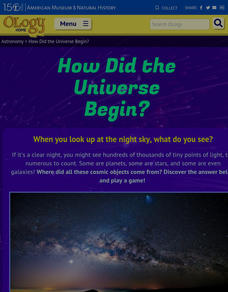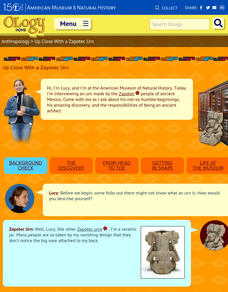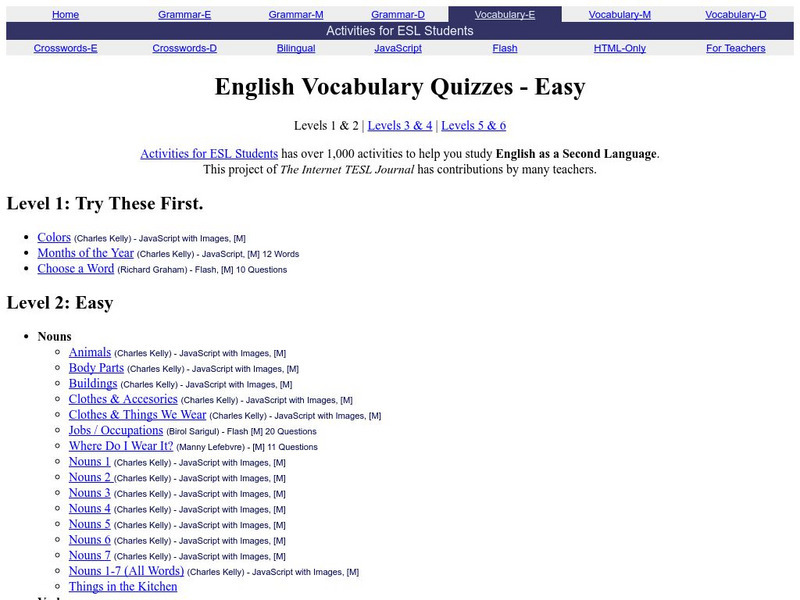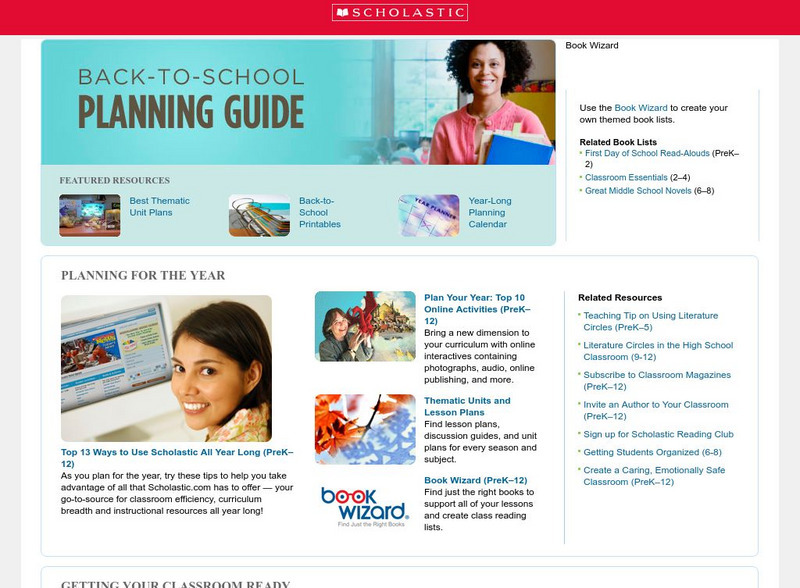American Museum of Natural History
How Did the Universe Begin?
The Big Bang Theory is more than a television show. Pupils read how Edwin Hubble observed other galaxies and noticed that the galaxies are moving away from each other. Scholars learn about the idea of the big bang and what happened next...
American Museum of Natural History
Up Close With a Zapotec Urn
If a Zapotec urn, buried for over a thousand years in a temple in the lost city of Xoxocotlan in the Valley of Oaxaca in the mountains of southern Mexico could talk image the stories it could tell. That's the set up in a clever resource...
American Museum of Natural History
What is Astronomy?
Go study the universe. Pupils learn seven aspects about astronomy and astronomers. They begin to learn about constellations; distance and motion between objects; gravity; the electromagnetic spectrum; dark matter and energy; and teams of...
TESL Journal
Activities for Esl Students: Vocabulary Quizzes Easy
These tests for English language learners by ELL teachers are self-scoring and reinforce beginning English language learners with vocabulary important in both social and academic settings. Many exercises are devoted to building...
Scholastic
Scholastic: Back to School Planning Guide
Multiple back to school resources. Includes icebreakers, quick first day ideas, and unit plans.
Penguin Publishing
Penguin Random House: Emerald Atlas by John Stephens
This is the official website for Emerald Atlas, the first book in the trilogy of Books of Beginning. It includes a video book trailer for Emerald Atlas, a fantasy novel written by John Stephens, links to a summer activity guide and a...
Scholastic
Scholastic: Welcome to the First Day of School!
Prepare for your students first day of school with these inviting activities. This site features several great ideas for teachers to incorporate in their beginning of school lessons.






